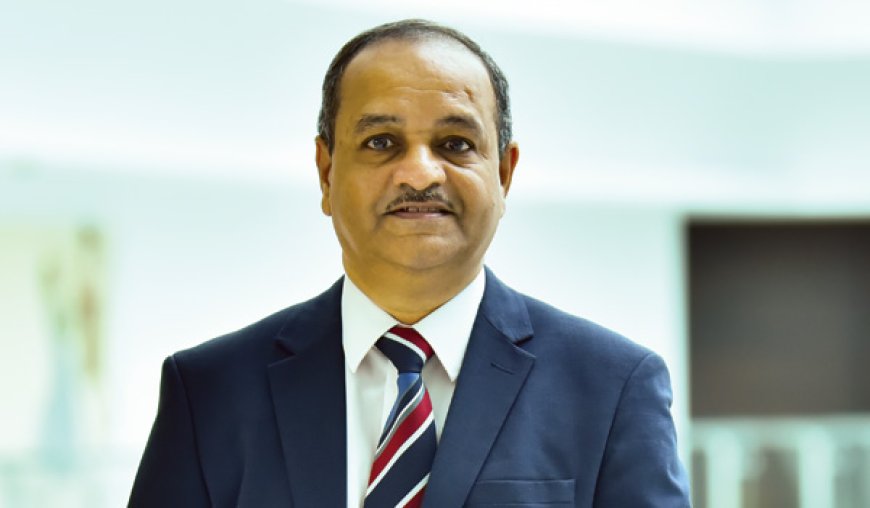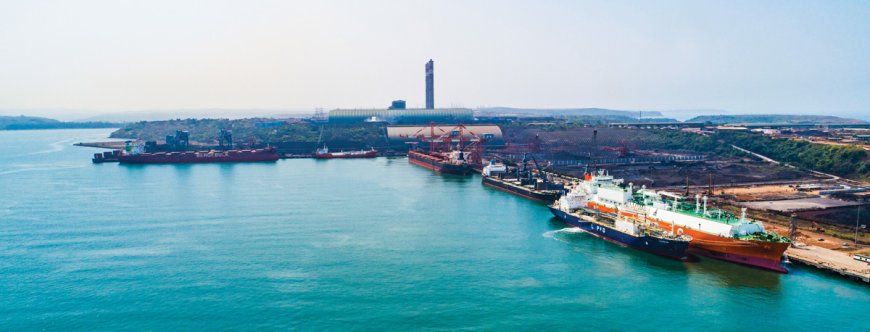We are one of the largest private players in operating terminals at Major Ports through PPP model.

Arun Maheshwari
JMD & CEO, JSW Infrastructure
How do you look at India’s port infrastructure and the cargo throughput trends?
India’s port infrastructure and cargo throughput trends reflect both opportunities and challenges in the country’s maritime sector.
In the last few years, there has been significant investment done in modernizing port infrastructure, including upgrades to cargo handling facilities, introduction of automation, and expansion of berths. Projects like the Sagarmala initiative aim to enhance port capacities and integrate them with logistics networks.
There is a continuous effort to improve connectivity between ports and inland transportation networks (roads, railways). The ongoing projects aim to enhance these connections to reduce logistics costs and transit times. There is a growing focus on integrated logistics solutions to streamline the supply chain and improve overall efficiency. Infusion of technology and digitalization has added to the efficiency improvement in the sector.
India has seen a general increase in cargo throughput over recent years, driven by rising domestic consumption, industrial activity, and global trade.
While west coast ports remain dominant on containerized cargo and handle a significant portion of India’s international trade; east coast ports are seeing increasing volumes for handling bulk cargo.
Ports and logistics operators are adapting to new trade dynamics and supply chain challenges by enhancing their infrastructure and operational capabilities.
On the other side, challenges like congestion of traffic is still an issue at some major ports, which led to delay in cargo handling and increased cost. There is also an infrastructure gap, especially in smaller and intermediate ports which is getting addressed in phased manner.
In summary, India’s port infrastructure is evolving to meet the growing demands and enhance efficiency, with significant investments in modernization, technology, and connectivity. Cargo throughput trends indicate robust growth, driven by both domestic and international factors, although challenges related to congestion, regulation, and sustainability remain.

How is JSW Infrastructure contributing to India’s maritime sector growth?
We are the second-largest private port operator in India. Today, we are operating three ports and seven terminals across Indian coast line with a capacity of 170 MMT. We have developed efficient and environment-friendly infrastructure at our ports on east and west coast of India. We are operating the busiest riverine port in India at NW10: Amba River. Our ports handle a diverse range of cargo types, from dry bulk and break bulk to liquid bulk, gases and containers.
Also, we are one of the largest private players in operating terminals at Major Ports through PPP model. It helps us to leverage private sector expertise and investment for the development of port facilities and infrastructure.
We continue to remain focused on increasing footprints in this sector and modernizing port facilities, improving logistics and connectivity to bring overall logistics cost down for user industry.
Investment in technology to improve operational efficiency and safety at our port facilities remains one of the key focus areas.
Our initiatives on enhancing connectivity between ports and inland transportation networks such as roads, railways, waterways and pipeline to improve the overall logistics chain continues.
How are your ports performing this year?
Our ports have been actively contributing to India’s maritime sector with notable performance metrics and developments.
India’s cargo handled volume grew by 4% in the in the first quarter of FY 2024-2025. During the quarter, the company handled cargo volumes of 27.8 million tonnes which is higher by 9% over the last year. The strong growth in cargo was despite a planned shutdown at one of the steel-making facilities of the anchor customer. The share of third-party in the overall volumes increased to 50% as compared to 37% a year ago.
The higher volume translated to 20% growth in the total revenue which stood at Rs 1,104 crore. EBITDA grew by 24% YoY at Rs 609 crore with a robust margin of 55.1%. As a result, profit after tax stood at Rs 297 crore. Moreover, we have been investing in expanding and modernizing their infrastructure. This includes increasing berth capacities, upgrading cargo handling facilities, and enhancing port operations.
We are focused in technological advancement (automation & digitization, operational efficiency, safety at port), sustainability (adopting sustainable practices like waste management, reducing emissions, and energy efficiency).
In an effort to combat global warming and climate change, JSW Infrastructure Limited announces its commitment to curtail its direct GHG emissions and achieve net-neutrality by 2050.
Overall, JSW Ports is performing well, with significant progress in capacity expansion, technological advancements, and sustainability efforts. The strong performance in cargo handling, financial matrices, and operational improvements reflect a strong position in India’s maritime sector.

What is your Mission 2025 for growth and partnering in India’s overall economic growth?
Infrastructure is a sector where vision and mission are very long-term, 20-50 years. Any activity happening is a path towards the overall vision. As part of the company’s vision and long-term strategy, our focus will be on expanding capacity through organic and inorganic opportunities in the port and related infrastructure sector, focus on last mile connectivity, increasing product basket and variety, adopting advanced technologies, promoting sustainability, enhancing connectivity and fostering strong public-private partnerships. These efforts would be aimed at supporting India’s overall economic growth by facilitating trade, improving logistics efficiency, and contributing to job creation and community development.







